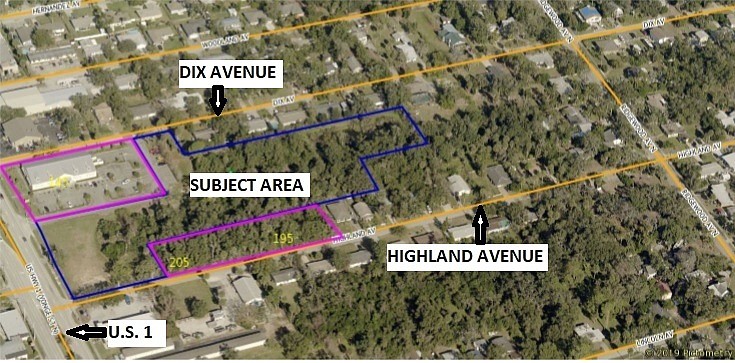- February 3, 2025
-
-
Loading

Loading

Some say new housing should fill in the undeveloped areas of a city, rather than sprawling outside the city. But there’s also the effect on the adjacent neighborhoods in the city to be considered.
There was a dispute at the July 11 Planning Board meeting between the owner of property between Dix and Highland avenues east of U.S. 1 and those who live on surrounding streets. The owner wants to have density changed so apartments can be built, and the residents fear more traffic on already burdened streets.
The Planning Board voted unanimously in favor of the landowner and the City Commission will make the final decision in two readings, August 20 and Sept. 10.
Several residents said Highland and Dix avenues are already bad because of traffic speeding and avoiding Granada Boulevard, including delivery trucks.
“The traffic is insane,” said Mark Meyer. “it will get worse. Consider the people. The people don’t want it.”
Terry Mercer expressed concerns that the traffic would overflow into the nearby historic district.
“We have bread trucks from the Dollar General,” she said.
The streets are older and narrow, and one resident said that sometimes a vehicle, depending on size, must pull over to allow an oncoming vehicle to pass by.
DENSITY CHANGES
For the eastern 2.52 acres of the subject property, which lies between single-family homes, the land use would change from low density residential to medium density, increasing from 4.3 units per acre to 12 units per acre, which would allow two-story apartment buildings.
The area also contains 3.48 acres along U.S. 1, zoned commercial, where the landowner is proposing a reduction in residential density, from 32 units to 22 units per acre (111 to 77) so that there would be no net increase in density in the entire area. Also, the entire area would have a cap of 60 residential units, limiting the overall impact.
James Stowers, attorney and former city commissioner, who represents the landowner, CST Holdings LLC, said the project is smart growth because it is infill as opposed to urban sprawl. He also said there are examples of multi-family near single-family with no negative impacts.
Stowers said any future plans would address concerns expressed at the meeting.
“We are taking notes on the comments,” he said.
Ella Dunaway, the child of a resident, spoke at the meeting, saying if apartments are built it would mean a loss of wildlife that she enjoys seeing. She’s even named the animals.
“The birds have babies,” she said. “If you build on the land all the animals will be gone.”
DEALING WITH TRAFFIC
When land use or zoning changes are made, nearby residents are usually assured by city officials that any building plans will have to go through neighborhood meetings as well as City Commission approval and the project could be rejected.
“They will have to come back through the same process,” said board member G.G. Galloway. “All we’re doing is changing density.”
The Planning Board generally agreed the project is worthwhile and traffic concerns, such as ingress and egress, can be addressed later.
“We hear people say we need to do infill,” said Board Chairman Doug Thomas. “People are concerned about sprawl.”
“The traffic is insane.”
MARK MEYER, resident near proposed apartments